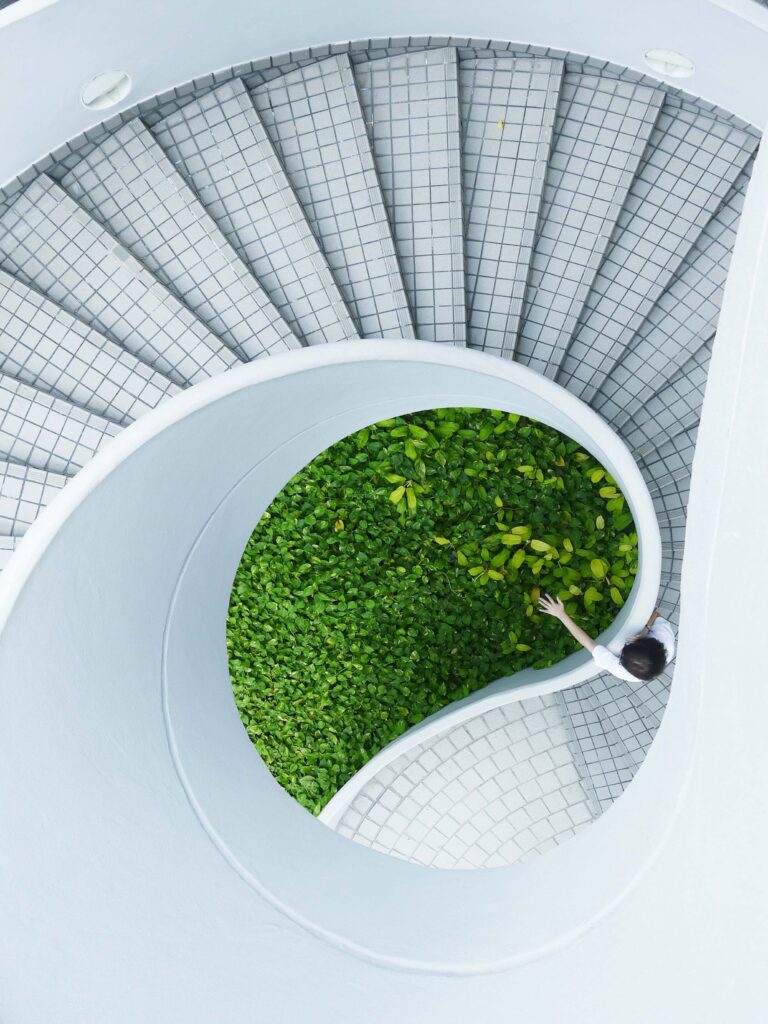Biophilia, a term popularized by biologist Edward O. Wilson in his 1984 book “Biophilia,” refers to the inherent human affinity for nature and other living organisms. The concept suggests that humans possess an instinctive emotional bond with the natural world, arising from our evolutionary history as beings closely connected to the environment. This may seem obvious, conscidering we are nature, but the significance (and depth) of this connection might be more profound than we think.
Understanding Biophilia
The idea of biophilia is deeply rooted in evolutionary biology. Throughout the course of human evolution, our ancestors were heavily dependent on their surroundings for survival, including food, water, shelter, and protection from predators. This prolonged interaction with the natural environment has imprinted certain preferences and behaviors in our species, leading to an inherent attraction to nature and living systems.
Biophilia is not a mere appreciation of the aesthetics of nature; it goes beyond that to encompass an emotional and cognitive connection. This connection can be experienced through various sensory perceptions, such as the sight of lush greenery, the sound of flowing water, the touch of soil, or the scent of flowers. Even in modern urban settings, humans are drawn to natural elements, such as parks, gardens, or indoor plants.
Biophilic Benefits
The biophilic connection has a significant impact on human well-being and overall health. Numerous studies have demonstrated that exposure to nature or natural elements can result in a range of positive outcomes:
- Stress Reduction: Spending time in natural environments has been shown to reduce stress levels and promote relaxation. Nature’s calming effect can help alleviate anxiety and contribute to mental and emotional well-being.
- Cognitive Benefits: Interacting with nature can enhance cognitive function, including improved focus, creativity, and problem-solving skills. Natural environments are thought to offer restorative properties for the human brain, counteracting the mental fatigue caused by modern urban life.
- Physical Health: Biophilic experiences have been linked to better physical health, such as lowered blood pressure and improved immune function. Access to green spaces can also encourage physical activity, leading to overall improved fitness levels.
- Emotional Connection: Exposure to nature fosters positive emotions and a sense of connectedness with the world around us. This emotional bond can lead to increased empathy and pro-environmental attitudes.
- Healing Environments: Biophilic design principles are increasingly being incorporated into healthcare settings, recognizing the role of nature in the healing process. Natural elements in hospitals and healthcare facilities can speed up recovery and reduce patients’ stress.
Connecting to Nature Indoors
Biophilic design focuses on creating spaces that mimic natural settings, incorporating features such as natural lighting, living walls, water features, and views of green spaces. The goal is to create environments that evoke a sense of being enveloped by nature, even in the heart of the concrete jungle.

Biodiverse Urban Planning
Central to biophilic urban planning are the establishment and preservation of urban parks and green spaces. These oases amidst the bustling cityscape offer respite and recreational opportunities, encouraging people to engage in physical activities, social interactions, and a much-needed escape from the pressures of daily life. Urban parks, with their carefully curated landscapes, can provide habitats for diverse flora and fauna, supporting biodiversity and contributing to the ecological balance of cities.
Ecological wisdom and knowledge
Effective biophilic design considers the cultural and contextual nuances of the location. Different cultures may have varying interpretations and relationships with nature, which should be thoughtfully integrated into the design process. Indigenous practices and traditional ecological knowledge can also play a crucial role in shaping biophilic spaces that resonate with the local community and uphold cultural heritage. By incorporating nature into urban spaces, architects and urban planners can create healthier, more productive, and emotionally enriching environments.
Sustainable Urban Development
Biophilic design aligns with the principles of sustainable urban development. By creating environments that encourage interaction with nature, it fosters a sense of environmental stewardship among city dwellers. Moreover, biophilic design emphasizes the use of renewable materials, green building practices, and energy-efficient technologies, contributing to reduced carbon footprints and increased environmental consciousness.
Facilitating Human Thriving
Biophilia underscores the significance of our connection with nature and how it profoundly influences our physical, emotional, and cognitive well-being. As urbanization continues to rise, understanding and implementing biophilic design principles becomes crucial in cultivating environments people thrive in. Embracing our biophilic tendencies can foster healthier, more sustainable societies, and help address some of the challenges posed by modern living. Biophilia in the built environment represents no less than a paradigm shift in urban planning and design, where nature-inspired spaces and elements are at the core of creating healthier and happier cities.
